Key Insights: How Does Turnitin Detect AI in Student Papers?

In April 2023, Turnitin rolled out its AI writing detection feature—integrated directly into its familiar Similarity Report. The move came in response to growing concerns around the use of generative AI tools like ChatGPT in student work.
As academic institutions seek to uphold standards of originality, Turnitin has positioned itself as a key player in identifying AI-generated content. But how does Turnitin AI detection actually work behind the scenes? This article breaks it down step by step.
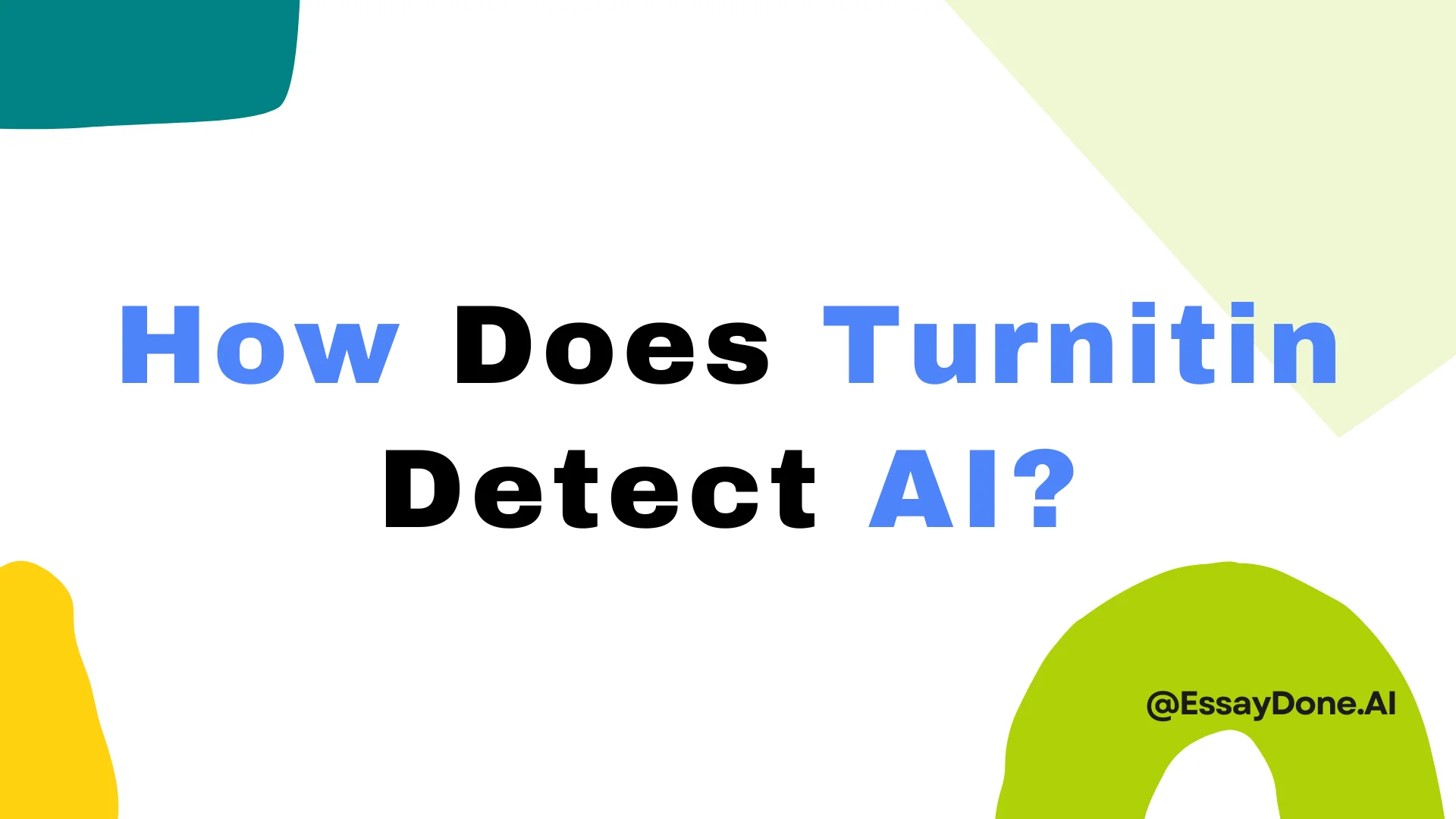
What Turnitin Detects
So, can Turnitin detect AI? The answer is: yes.
Since April 2023, Turnitin has added an AI writing detection feature as part of its Similarity Report. This feature is designed to identify two main types of content:
AI-generated content
Text that appears to be created directly by generative AI tools such as ChatGPT, including versions like GPT-3, GPT-3.5, and GPT-4.AI-paraphrased content
Text that was first generated by AI and then altered using AI-based paraphrasing tools, which try to rewrite the content to appear more human.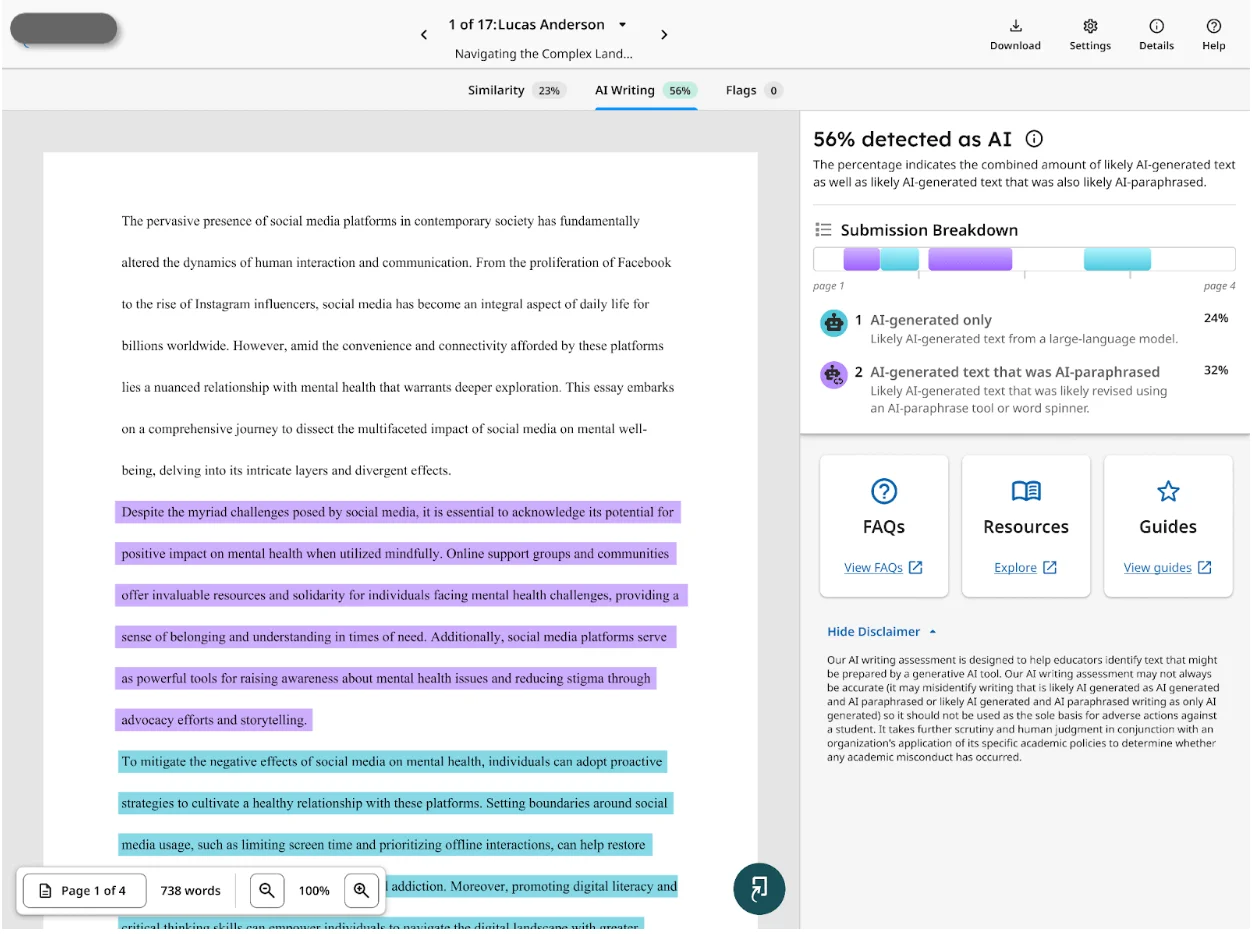
How Turnitin Detects AI Writing In the Essay
But how does it actually work on a student's essay? Here’s a breakdown of what’s going on behind the scenes.
Step 1: Breaking Down Your Submission
When you submit a paper, Turnitin doesn’t look at the whole thing at once. Instead, it splits the document into smaller parts—usually a few hundred words each. Why? Smaller chunks make it easier for the system to analyze the writing style, structure, and language patterns more accurately.
Step 2: Segment Scoring with AI Models
Each segment goes through Turnitin’s proprietary AI detection models. These models assign a score between 0 and 1:
Close to 0 = likely human-written
Closer to 1 = likely AI-generated
0.5–1 = possibly mixed with AI influence
These numbers reflect the probability, not certainty. Think of it as a “risk score” per segment.
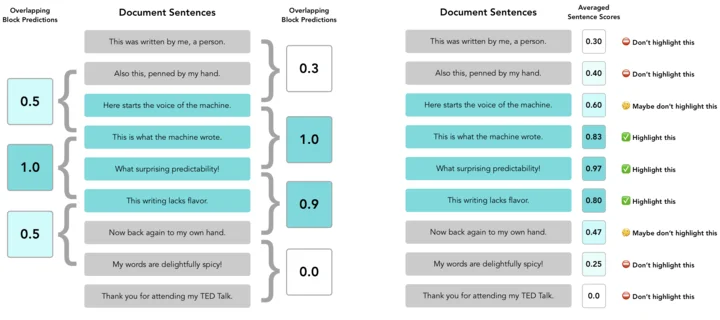
Step 3: Overall AI Percentage
After all segments are analyzed, Turnitin combines the scores into one big-picture number: the AI writing percentage. This shows how much of your paper may have been AI-generated or altered by an AI-based paraphraser.
Important note:
This percentage only reflects qualifying text—typically long-form prose. Bullet points, lists, or code blocks won’t count.
This percentage appears in the report—but does not affect the Similarity Score itself.
Step 4: Pattern Matching (How Turnitin Spots AI)
Turnitin doesn’t just “guess” if text is from ChatGPT or similar models. It scans for patterns typical of AI-generated language:
Predictable sentence structures
Repetitive phrasing
Low variation in sentence length
Overuse of transitional phrases
These traits are common in content generated by large language models like GPT.
Step 5: AI Detection Report & Color Codes
Once processing is complete, Turnitin provides an AI writing report. Here's how to interpret what you see:
Color Indicators:
🔵 Blue (20%–100%): Processed successfully. Shows detected AI content.
🔵 Blue with * (1%–19%): Low-confidence detection. These scores are less reliable—flagged with an asterisk to prevent overreaction.
⚪ Gray (--%): Not processed. Could be due to file format issues or the submission being too old.
❗ Error (!): System error. Turnitin couldn’t complete the analysis—try resubmitting.
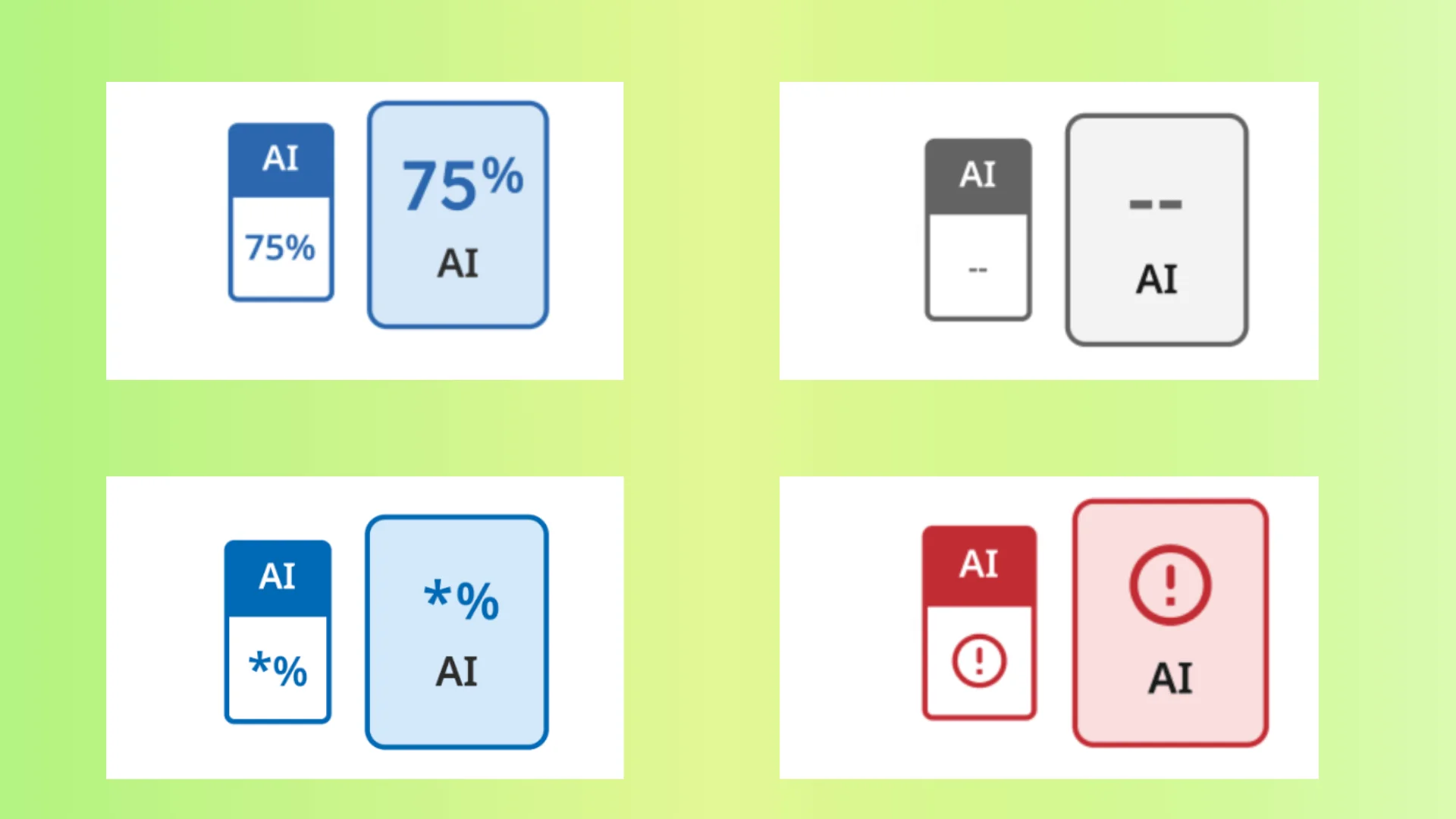
How Turnitin’s AI Detectors Are Trained
Turnitin’s AI detection system is built on a transformer-based deep learning model. This model processes text in small overlapping segments, each covering about five to ten sentences (a few hundred words). These “segment windows” slide through the document one sentence at a time, allowing the system to gather enough statistical data from the words and phrases in each window. This helps the model decide if the text in that segment matches the typical patterns of AI-generated writing.
The model outputs a score between 0 and 1 for each segment. A score closer to 1 means the segment is very likely written by AI; closer to 0 means it’s likely human-written. Turnitin then averages these scores across all segments containing a specific sentence to assign that sentence an AI likelihood score. If the score passes a certain threshold, the sentence is flagged as AI-generated or AI-paraphrased (in the case of the AIR model).
For a full document, Turnitin labels it “AI-generated” only if more than 20% of the sentences exceed the AI writing threshold. This cutoff helps reduce false positives, especially for documents with fewer than 20% AI-like content, where the chance of errors is higher. The system also requires documents to be at least 300 words for reliable processing.
AIW and AIR Models
Turnitin’s AI writing detection tool initially launched with the AIW-1 model and has since improved to AIW-2. AIW-2 detects not only straightforward AI-generated text but also text modified by AI paraphrasing tools, which aim to disguise AI origins by rewriting content.
In addition to AIW, Turnitin uses the AIR-1 model for detecting AI paraphrasing specifically. AIR-1 identifies the distinct statistical traces left by AI paraphrasing tools, which differ from regular AI-generated text. This allows Turnitin to highlight sentences that have been altered by AI, giving educators a clearer picture of the writing’s origin.
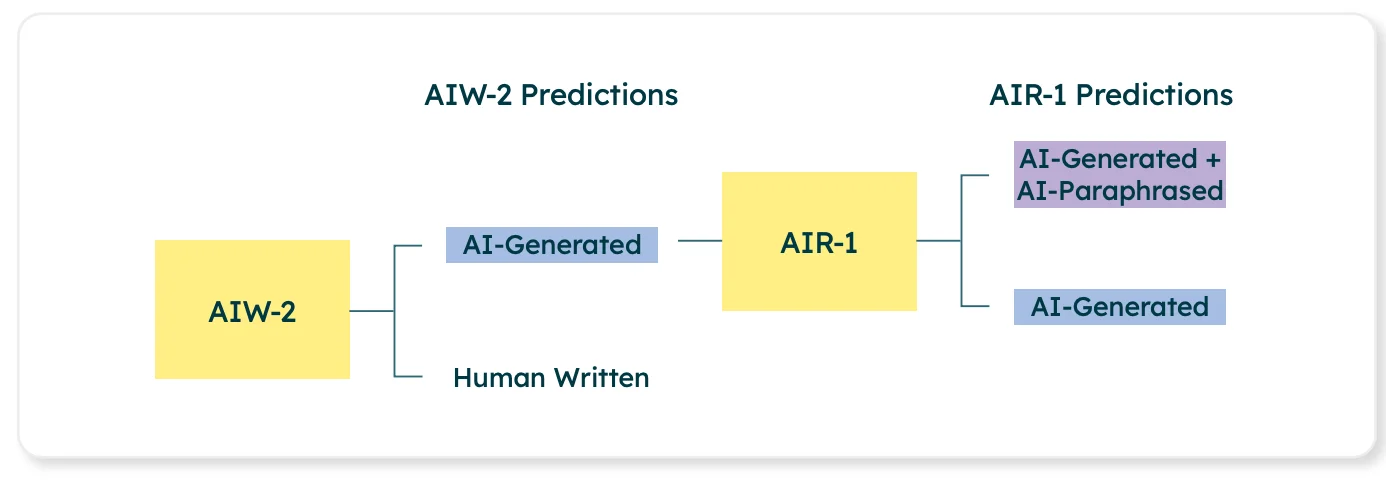
The AIR-1 model only activates on documents flagged by AIW-2 as having 20% or more AI-generated content and doesn’t assign paraphrase labels to sentences identified as human-written.
Training Data and Model Design
Turnitin’s models are trained on a wide and diverse dataset spanning about 20 years of academic writing, including both human-written and AI-generated texts from various subjects and student backgrounds. The dataset also includes mixed types of texts, such as human writing that has been AI-paraphrased or AI writing that has undergone paraphrasing.
Special care was taken to include texts from non-native English speakers, students from different countries, and less common academic fields to reduce bias and improve fairness.
Where Turnitin’s AI Report Appears
Turnitin’s AI detection isn’t a separate tool — it’s embedded directly into the Similarity Report interface.
Part of the Similarity Report
When a paper is submitted, Turnitin processes the content just like it does for plagiarism. If AI detection is enabled, an AI Writing Indicator will appear in the report sidebar. Clicking it shows which parts may have been generated or paraphrased using AI.
This indicator works separately from the plagiarism score. It’s an extra layer of analysis — not a grade.
Visibility Controlled by Institutions
The AI detection tool is only active if the institution enables it. That means:
Some schools may choose to show it to instructors only.
Others may disable it entirely.
Students usually won’t see the AI results on their end.
Access is managed at the school level, so visibility varies.
How to Check for Turnitin AI Flags Before Submitting
Since students typically don’t have access to Turnitin’s AI results, many rely on other professional tools that mimic how Turnitin detects AI-generated content.
One commonly used option is:
TurnitinDetector.com – A tool that simulates Turnitin’s AI and plagiarism checks.
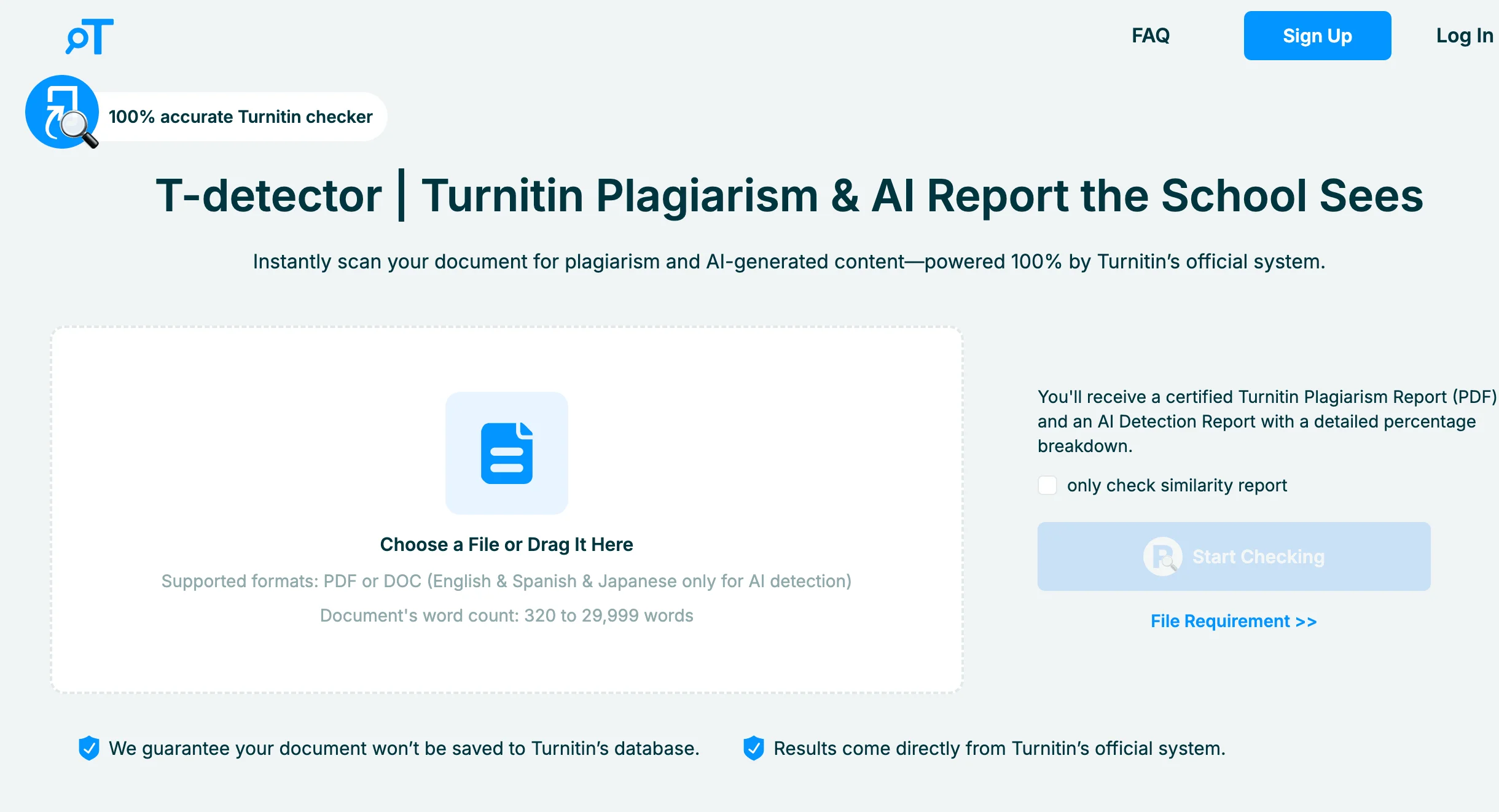
Uses Turnitin’s actual detection engine (not a lookalike).
Does not save your file to any database.
Delivers results almost identical to what instructors see.
This gives students a chance to review potential AI flags before uploading to their school’s LMS.
Limitations and Accuracy of Turnitin’s AI Detection
Turnitin’s AI checker is a helpful tool—but it’s not flawless. Here’s what students and instructors should keep in mind:
AI Detection ≠ Final Verdict
Turnitin is clear that this AI detection tool is not a final verdict. It’s just one data point for teachers. The platform advises educators to consider context—like a student's writing history and performance—before drawing conclusions.
False Positives Are Possible
They also acknowledge the possibility of false positives and encourage instructors to give students the benefit of the doubt. Turnitin emphasizes that this feature should support dialogue, not suspicion, between students and educators.
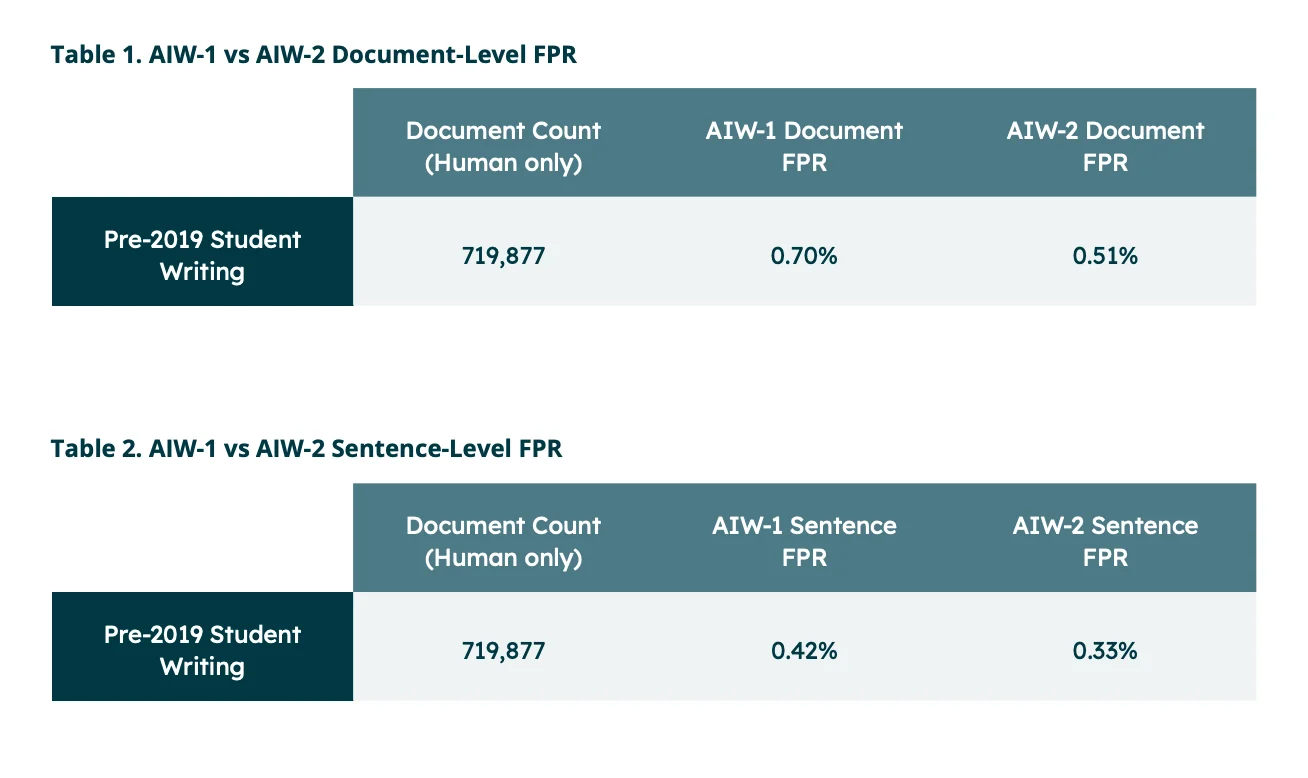
Even if the tool flags content as AI-generated, it might be human-written. That’s especially true for students who naturally write in a style that overlaps with AI-generated language—structured, repetitive, or overly formal.
That’s why teacher insight matters. Educators are encouraged to consider:
The student’s past writing
Course performance
The context of the assignment before making any conclusions.
Constant Updates, But Not Perfect
Turnitin’s tool stays effective by updating regularly to match new AI models like GPT-4 and GPT-4o. It focuses on language patterns that generative models tend to produce—like overly consistent sentence structure or predictive phrasing.
Still, newer or more advanced AI tools can sometimes slip through undetected. That’s why Turnitin recommends educators stay updated on detection limits and use the results as one piece of a larger evaluation process.
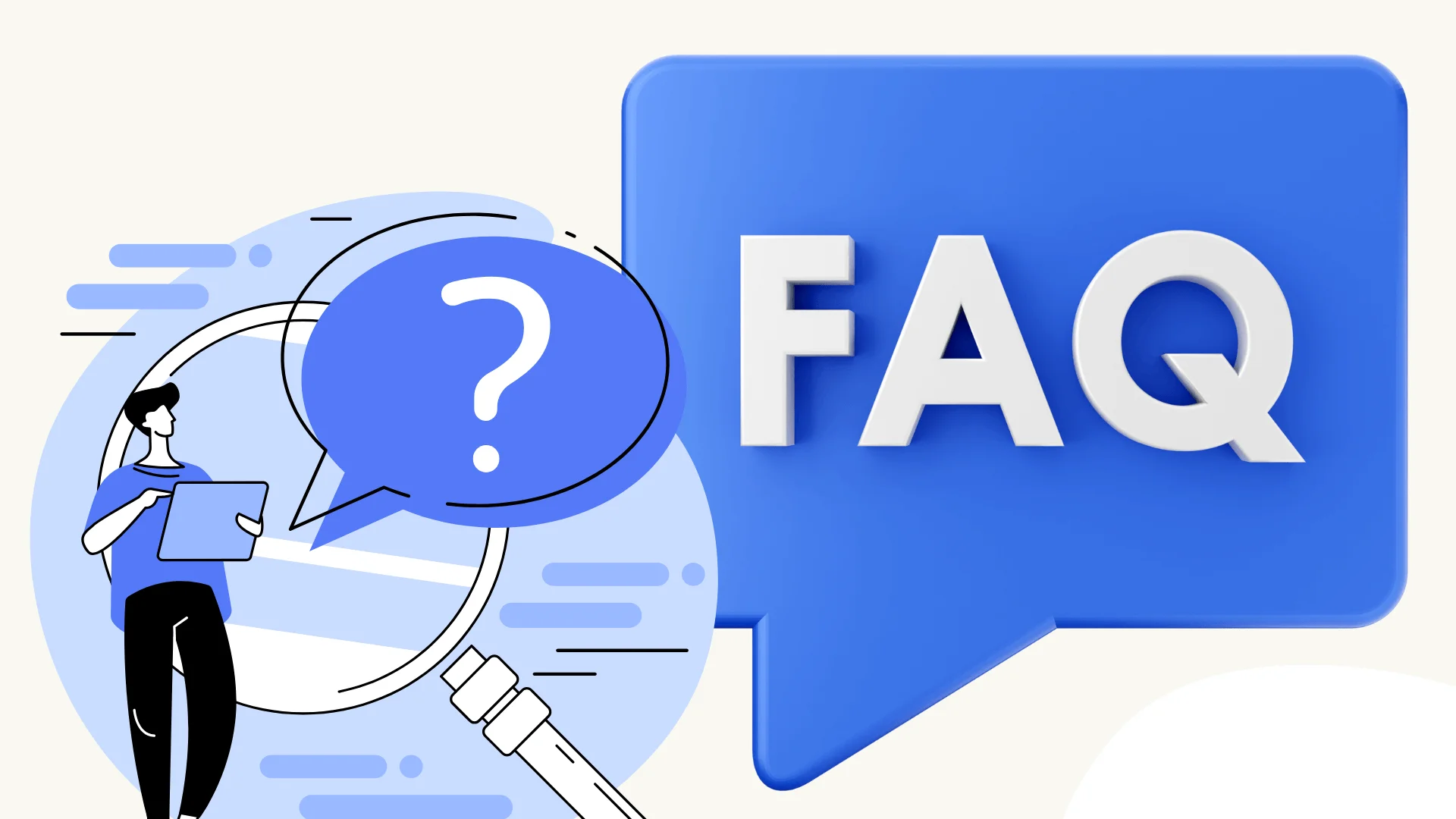
FAQ
Can Turnitin really detect AI?
Yes, Turnitin can flag content likely written or paraphrased by AI using its detection models. However, it’s not 100% accurate and should be interpreted with human judgment.
How much AI is acceptable in Turnitin?
There’s no fixed limit. Turnitin doesn’t penalize based on AI percentage. Instructors decide what's acceptable based on the assignment and context.
Is 40% on Turnitin bad?
Not necessarily. A 40% AI score means that portion of text resembles AI-generated patterns. It doesn’t confirm misconduct. Your instructor will assess the context.
Summary
We’ve covered how Turnitin detects AI writing—through segment analysis, pattern recognition, and AI prediction models. While it’s a helpful tool for spotting AI-generated or AI-paraphrased content, final judgment still rests with educators. Understanding how the system works can help both students and instructors use it more effectively.
